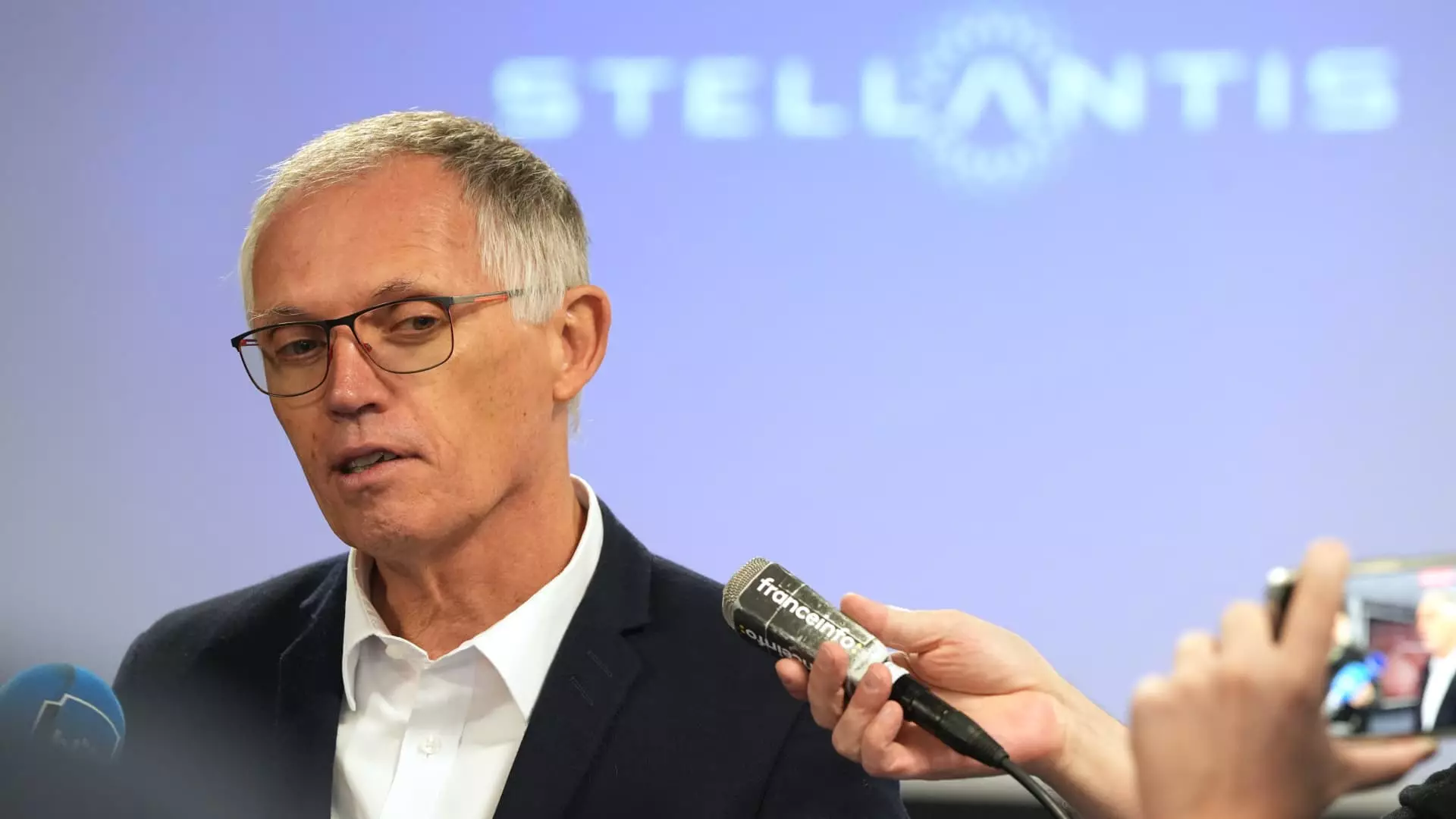In a surprising turn of events, Carlos Tavares has stepped down as CEO of Stellantis, one of the world’s major automobile manufacturers. His resignation, effective immediately, has left many in the automotive sector speculating about the implications for the company’s future. The board of directors accepted this resignation on Sunday, which came as a result of “different views” that had surfaced between Tavares and the board regarding the company’s direction. As the fourth-largest carmaker globally, Stellantis is now in the position of needing to find a new leader amidst growing financial unrest.
Tavares was at the helm of Stellantis since its inception in 2021, born out of the merger between Fiat Chrysler Automobiles and PSA Groupe, where he previously served as chairman. Known for his strategic acumen, Tavares was previously regarded as a rising star within the automotive industry, drawing comparisons to industry mogul Carlos Ghosn. However, despite his accomplishments—including leading the company to notable profitability—it seems that recent operational challenges have overshadowed his legacy.
Under Tavares’ leadership, Stellantis was once celebrated for its agile handling of the complex merger, allowing the blending of numerous well-known brands such as Jeep, Dodge, and Peugeot. Although Tavares initially succeeded in steering Stellantis towards profitability, the past year has seen the company grappling with underwhelming financial results, primarily attributed to a lack of investment in product innovation and a mismanaged U.S. market—historically its cash cow.
Financial Decline and Corporate Challenges
Stellantis has struggled significantly in 2024, with company performance falling dramatically below projections. In September, the automaker reduced its annual financial guidance, hinting at underlying distress within its operations. Moreover, third-quarter figures revealed a staggering 27% decline in net revenues, compounded by a 20% year-over-year drop in global vehicle sales and ongoing struggles within the U.S. market.
The crux of the matter is a perceived disconnect between Tavares’ aggressive cost-cutting measures—reported to total around €8.4 billion ($9 billion)—and the actual needs of the business. His initiatives aimed to streamline operations by reshaping the supply chain and reducing head counts, particularly in higher-cost regions. However, such dramatic cuts have not come without pain. Reports suggest that these strategies have led to excessive reductions, fueling operational inefficiencies and stoking unrest among employees.
Internal Pressures and Unions’ Response
The discontent within Stellantis isn’t confined to its upper management. There’s been significant backlash among employees and unions regarding ongoing layoffs and production cuts. The United Auto Workers (UAW) union has voiced its frustrations with Tavares, calling for his removal amid heightened tensions as workers face uncertainty in job security and their working conditions. These protests have intensified as production scales back and dealerships register bloated inventories, worsening the financial support status for selling vehicles.
Stellantis’ dealers have also expressed dissatisfaction with Tavares’ leadership. With inadequate financial backing from the corporate level, many dealers find themselves ill-equipped to manage the rising inventory loads. The disconnect between the corporate strategy and ground-level operations raises concerns about the company’s ability to rebound under current management frameworks.
As Stellantis begins the search for a new CEO, it faces a critical juncture. The interim executive committee, led by chairman John Elkann, must address both the immediate operational hurdles and the broader issue of aligning the company’s vision with its workforce’s reality. The challenge lies in establishing a cohesive strategy that reconciles the necessity for cost reduction with the needs for innovation and market competitiveness.
The appointment of a new CEO could dictate the trajectory of Stellantis moving forward. Stakeholders will be closely monitoring how the board of directors navigates this transition and whether they can cultivate a corporate culture that fosters collaboration rather than conflict. It will also be essential to reconcile the divide between corporate cost-cutting measures and the pressing concerns of employees and dealers alike.
The resignation of Carlos Tavares not only signals a leadership vacuum but also underscores the complexities facing Stellantis as it seeks to restore its market position and corporate harmony. The coming months will reveal whether the company can pivot effectively and reclaim its place as a leading force in the automotive industry.

Leave a Reply